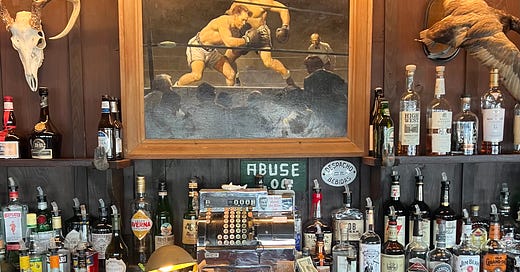The bar is a very good invention. It’s a public place where you can do what you can already do in private. The bar itself is raised, usually wood, but also zinc or marble, is an elegant way of arranging people. You can face the person next to you, or straight ahead if you’re alone or prefer the company of your own thoughts. You can talk to the bartender as much or as little as you like, and you’re nearly at eye level, which is more natural, and has always made the bar a comfortable place to have dinner.
But good bars getting are harder to find. I wrote about this upsetting trend in the latest Esquire. (Yes, I also wrote about fasting in the same issue—we all contain multitudes!). People know why they like certain bars—I’ve written about what makes a good bar, some favorite New York bars (and a few un-favorites), and what may be the best bar. The demise of the bar comes for many reasons, most are familiar at this point, including the unraveling of communal behavior in shared spaces. This starts with iPhones but doesn’t end there.
When you are in a bar you share a room with other people even when you’re alone. That is harder to do. We have to contend with the diabolical insistence of strangers opening up their computers as if every place is a workspace. The bar is the opposite of the office. And as soon as a computer is opened anywhere, then that place ceases to be attractive—it’s the sweatpants of behavior.
A bar is not just a place to drink—it’s a refuge from the world, which is why a bar that has the news on television cannot be a good bar. I’m against televisions in any establishment (including hotel rooms), but that’s a losing battle. I’ve accepted the fact that the game must go on.




